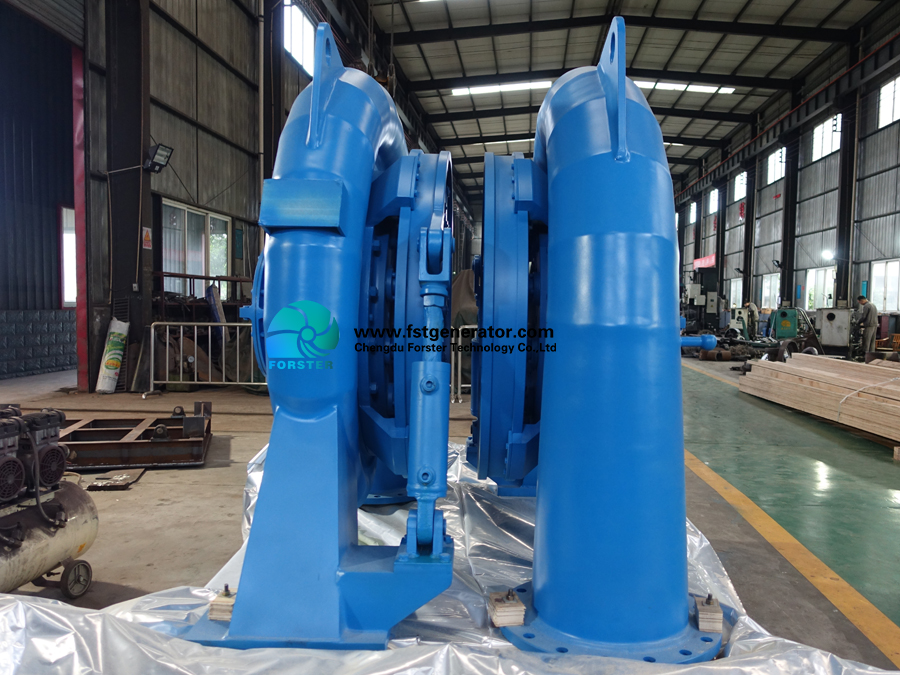China current power generation forms mainly include the following.
(1) Thermal power generation. A thermal power plant is a factory that uses coal, oil, and natural gas as fuels to produce electricity. Its basic production process is: fuel combustion turns the water in the boiler into steam, and the chemical energy of the fuel turns into heat energy. The steam pressure drives the rotation of the steam turbine. Converted into mechanical energy, and then the steam turbine drives the generator to rotate, converting the mechanical energy into electrical energy. Thermal power needs to burn fossil fuels such as coal and petroleum. On the one hand, the fossil fuel reserves are limited, and the more they burn, the less they are facing the danger of exhaustion. It is estimated that the world’s oil resources will be exhausted in another 30 years. On the other hand, the burning of fuel will emit carbon dioxide and sulfur oxides, so it will cause the greenhouse effect and acid rain, and deteriorate the global environment.
(2) Hydropower. The water that transforms the gravitational potential energy of the water into kinetic energy impacts the water turbine, the water turbine starts to rotate, the water turbine is connected to the generator, and the generator starts to generate electricity. The disadvantage of hydropower is that a large amount of land is flooded, which may cause damage to the ecological environment, and once a large reservoir collapses, the consequences will be disastrous. In addition, a country’s water resources are also limited, and they are also affected by the seasons.
(3) Solar power generation. Solar power generation directly converts sunlight into electricity (also called photovoltaic power generation), and its basic principle is the “photovoltaic effect.” When a photon shines on a metal, its energy can be absorbed by an electron in the metal. The energy absorbed by the electron is large enough to overcome the internal gravity of the metal to do work, escape from the metal surface and become a photoelectron. This is the so-called “photovoltaic effect”, or “photovoltaic effect” for short. The solar photovoltaic system has the following characteristics:
①No rotating parts, no noise; ②No air pollution, no waste water discharge; ③No combustion process, no fuel required; ④Simple maintenance and low maintenance cost; ⑤Good operation reliability and stability;
⑥The solar battery as a key component has a long service life;
⑦The energy density of solar energy is low, and it varies from place to place and time to time. This is the main problem facing the development and utilization of solar energy.
(4) Wind power generation. Wind turbines are power machinery that convert wind energy into mechanical work, also known as windmills. Broadly speaking, it is a heat-utilizing engine that uses the sun as a heat source and the atmosphere as a working medium. It has the following characteristics:
①Renewable, inexhaustible, no need for coal, oil and other fuels required for thermal power generation or nuclear materials required for nuclear power plants to generate electricity, except for regular maintenance, without any other consumption;
②Clean, good environmental benefits; ③Flexible installation scale;
④Noise and visual pollution; ⑤Occupy a large area of land;
⑥Unstable and uncontrollable; ⑦Currently the cost is still high; ⑧Affecting bird activities.
(5) Nuclear power. A method of generating electricity using the heat released by nuclear fission in a nuclear reactor. It is very similar to thermal power generation. Nuclear power has the following characteristics:
①Nuclear power generation does not emit huge amounts of pollutants into the atmosphere like fossil fuel power generation, so nuclear power generation will not cause air pollution;
②Nuclear power generation will not produce carbon dioxide that aggravates the global greenhouse effect;
③The uranium fuel used in nuclear power generation has no other purpose except power generation;
④ The energy density of nuclear fuel is several million times higher than that of fossil fuels, so the fuel used by nuclear power plants is small in size and convenient for transportation and storage;
⑤In the cost of nuclear power generation, fuel costs account for a lower proportion, and the cost of nuclear power generation is less susceptible to the impact of the international economic situation, so the cost of power generation is more stable than other power generation methods;
⑥Nuclear power plants will produce high- and low-level radioactive wastes, or used nuclear fuels. Although they occupy a small volume, they must be handled with care due to radiation, and they must face considerable political distress;
⑦The thermal efficiency of nuclear power plants is low, so more waste heat is discharged into the environment than ordinary fossil fuel power plants, so the thermal pollution of nuclear power plants is more serious;
⑧The investment cost of nuclear power plant is high, and the financial risk of power company is relatively high;
⑨ There is a large amount of radioactive materials in the reactor of nuclear power plant, if it is released to the external environment in an accident, it will cause harm to the ecology and the people;
⑩ The construction of nuclear power plants is more likely to cause political differences and disputes. o What is chemical energy?
Chemical energy is the energy released when an object undergoes a chemical reaction. It is a very hidden energy. It cannot be used directly to do work. It is released only when a chemical change occurs and becomes heat energy or other forms of energy. The energy released by the burning of oil and coal, the explosion of explosives, and the chemical changes in the body of food that people eat are all chemical energy. Chemical energy refers to the energy of a compound. According to the law of conservation of energy, this energy change is equal in magnitude and opposite to the change in heat energy in the reaction. When the atoms in the reaction compound rearrange to produce a new compound, it will lead to chemical energy. The change, producing exothermic or endothermic effect
Post time: Oct-25-2021

